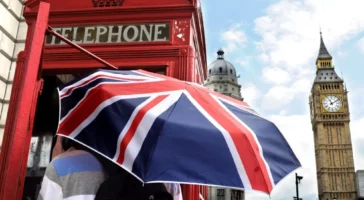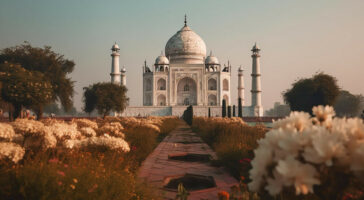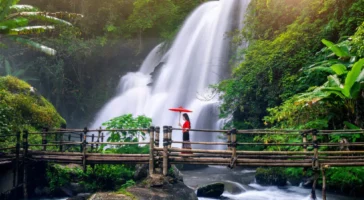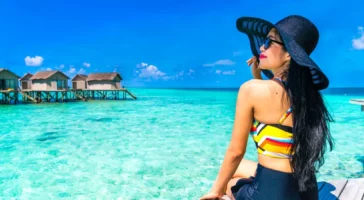Singapore has seen a growing number of tourists visiting this country every year. This doesn’t come to me as a surprise with the many attractions on offer. As the resident travel blogger, I have compiled a guide of 5 Places you have to visit when in Singapore. These places are guaranteed to give you an experience which will never be forgotten.
Marina Bay Sands Singapore

Marina Bay Sands is an integrated resort fronting Marina Bay in Singapore, owned by the Las Vegas Sands Corporation. At its opening in 2010, it was billed as the world’s most expensive standalone casino property at S$8 billion, including the land cost. The resort includes a 2,561-room hotel, a 120,000-square-metre convention-exhibition centre, the 74,000-square-metre The Shoppes at Marina Bay Sands mall, a museum, a large theatre, “celebrity chef” restaurants, two floating crystal pavilions, art-science exhibits, and the world’s largest atrium casino with 500 tables and 1,600 slot machines. The complex includes three towers topped by a connecting 340-metre-long SkyPark with a capacity of 3,902 people and a 150 m infinity swimming pool, set on top of the world’s largest public cantilevered platform, which overhangs the north tower by 66.5 m. The 20-hectare resort was designed by Moshe Safdie architects. Marina Bay Sands was originally set to open in 2009, but its construction faced delays caused by escalating costs of material and labour shortages from the outset. Wikipedia
Gardens by the Bay

The Gardens by the Bay is a nature park spanning 101 hectares in the Central Region of Singapore, adjacent to the Marina Reservoir. The park consists of three waterfront gardens: Bay South Garden, Bay East Garden and Bay Central Garden. The largest of the gardens is the Bay South Garden at 54 hectares designed by Grant Associates. Its Flower Dome is the largest glass greenhouse in the world. Gardens by the Bay was part of the nation’s plans to transform its “Garden City” to a “City in a Garden”, with the aim of raising the quality of life by enhancing greenery and flora in the city. First announced by Prime Minister Lee Hsien Loong at Singapore’s National Day Rally in 2005, Gardens by the Bay was intended to be Singapore’s premier urban outdoor recreation space and a national icon. Being a popular tourist attraction in Singapore, the park received 6.4 million visitors in 2014, while topping its 20 millionth visitor mark in November 2015 and over 50 million in 2018. Wikipedia
Sentosa

Sentosa Island, known mononymously as Sentosa, and formerly Pulau Blakang Mati, is an island located off the southern coast of Singapore’s main island. The island is separated from the main island of Singapore by a channel of water, the Keppel Harbour, and is adjacent to Pulau Brani, a smaller island wedged between Sentosa and the main island. Formerly used as a British military base and afterwards as a Japanese prisoner-of-war camp, the island was renamed Sentosa and was planned to be a popular tourist destination. It is now home to a popular resort that receives more than twenty million visitors per year. Attractions include a 2 km long sheltered beach, Madame Tussauds Singapore, an extensive Cable Car network, Fort Siloso, two golf courses, 14 hotels and the Resorts World Sentosa, which features the Universal Studios Singapore theme park and one of Singapore’s two casinos, the other being in Marina Bay Sands. Sentosa is also widely known as being the location of the 2018 North Korea–United States Singapore Summit, where North Korean Chairman Kim Jong-un and U.S. President Donald Trump met at the Capella Hotel located on the island. Wikipedia
Universal Studios Singapore

Universal Studios Singapore is a theme park located within Resorts World Sentosa on Sentosa Island, Singapore. It features 28 rides, shows, and attractions in seven themed zones. It was a key component of the Genting Group’s bid for the right to build Singapore’s second integrated resort. On 8 December 2006, the Singapore government announced that the consortium had won the bid. Construction of the theme park and the rest of the resort started on 19 April 2007. It is the second Universal Studios theme park to open in Asia, and the first in Southeast Asia. The official plans for the park were unveiled to the public when Universal Studios Singapore released a park map to the public on 20 October 2009. Universal Studios Singapore attracted more than 2 million visitors in the 9 months from its opening. The park has been marketed by Universal Parks & Resorts as a “one-of-its-kind theme park in Asia” and promised that the park would be the only one of its kind in Southeast Asia for the next 30 years. Wikipedia
Singapore Botanic Gardens

The Singapore Botanic Gardens is a 162-year-old tropical garden located at the fringe of the Orchard Road shopping district in Singapore. It is one of three gardens, and the only tropical garden, to be honoured as a UNESCO World Heritage Site. The Botanic Gardens has been ranked Asia’s top park attraction since 2013, by TripAdvisor Travellers’ Choice Awards. It was declared the inaugural Garden of the Year, International Garden Tourism Awards in 2012, and received Michelin’s three-star rating in 2008. The Botanic Gardens was founded at its present site in 1859 by an agri-horticultural society. It played a pivotal role in the region’s rubber trade boom in the early twentieth century, when its first scientific director Henry Nicholas Ridley, headed research into the plant’s cultivation. By perfecting the technique of rubber extraction, still in use today, and promoting its economic value to planters in the region, rubber output expanded rapidly. At its height in the 1920s, the Malayan peninsula cornered half of the global latex production. Wikipedia





